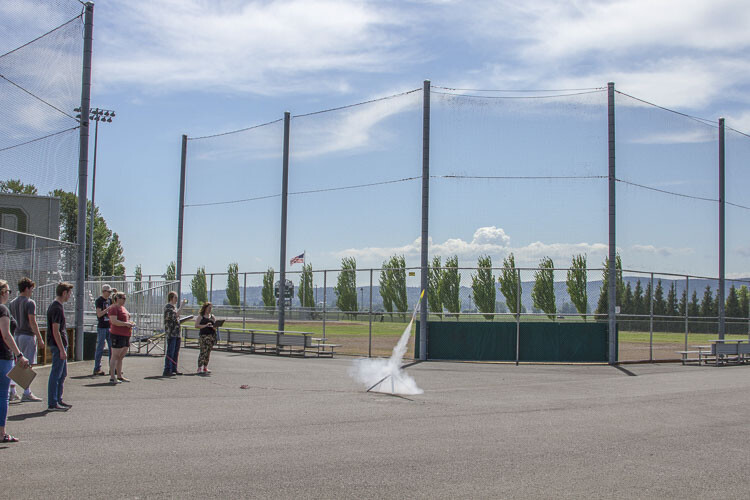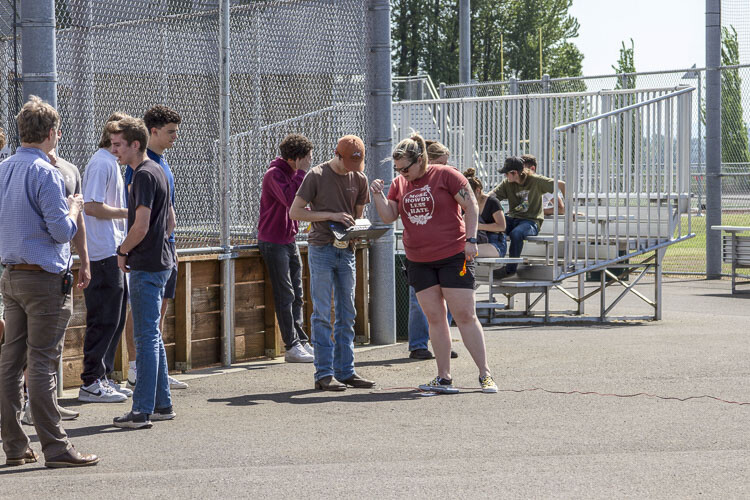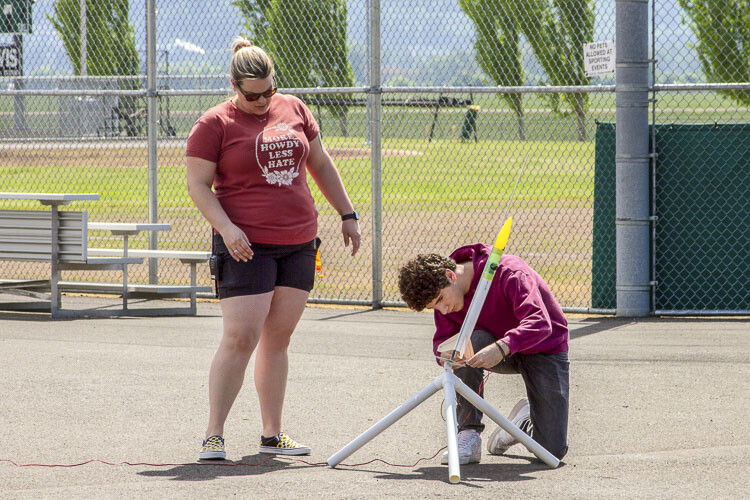
Applied Math takes concepts students learn in Algebra and Geometry and uses hands-on real-world experiments to take those concepts into reality
Math teachers at Woodland High School use innovative hands-on experiments to engage students and enhance learning. Applied Math, a class that goes beyond traditional math instruction, continues to gain recognition for its ability to bridge the gap between theoretical concepts and real-world applications. Through hands-on experiments and practical projects, high school students enrolled in Applied Math explore mathematical principles in a tangible and engaging way.
Applied Math takes concepts students learn in Algebra and Geometry and uses hands-on real-world experiments to take those concepts into reality.

“Applied Math provides the ‘why’ to back up the equations and concepts students have learned in prior years,” said Jennifer Benedict, a math teacher at WHS. “The chance to see principles in action makes concrete connections to concepts that may have been abstract prior to the hands-on experiment.”
For each project, students write reflections where they address the mathematical principles and concepts they observed.
“These reflections provide students the opportunity to practice math literacy as well as math writing skills,” said Benedict. “Students practice data analysis and interrupt patterns that may happen between testing and data collection.”
Throughout a given semester, the projects take students through the engineering design cycle. Since Applied Math also gives students a Career and Technical Education (CTE) credit, guest speakers help connect students with actual industry standards with many engineers from a variety of backgrounds presenting and speaking throughout the year.
“Applied Math stems from three major sources: Engineering 100 and 101 courses write for the Air Force Academy, a robotics section developed alongside one of my contacts from NASA’s Jet Propulsion Laboratory, and content from my own experiences where I worked with projects I want to pass on to future students,” said Benedict. “The collaboration with all of my sources has been instrumental to the success I’ve had with this class as my contacts help me deepen my engineering knowledge so I can better-share the concepts with students.”

Applied Math caters to a wide spectrum of student backgrounds. The course’s adaptability allows teachers to meet students where they are, enabling personalized instruction and support. This inclusivity fosters an environment where students can thrive, regardless of their mathematical abilities, prior knowledge, or individual learning styles.
“Applied Math allows for adaptation to meet each student where they are in the process of learning,” said Benedict. “I have provided modifications for students with special needs, while also elevating the math for students who are co-enrolled in calculus.”
The decision to become a math teacher is often rooted in personal experiences and influences. For Benedict, her own teachers and family influenced her decision.

“For me, it was a case of nature and nurture as my parents are an engineer and an accountant; the love for school and STEM subjects was passed on to me,” she said. “I was also lucky to grow up in a school system that allowed great teachers to be great; this resulted in me wanting to be a teacher for my whole life, and Applied Math gives me the chance to help pass on my excitement for learning and to encourage curiosity in my students.”
Learn more about how Woodland Public Schools educates students and serves the community by visiting the dedicated news webpage at www.woodlandschools.org/news/wsd
Information provided by Woodland School District.
Also read:
- Journey Theater presents The Adventures of Tom SawyerJourney Theater is bringing Tom Sawyer to life in Battle Ground with performances running May 30 through June 7.
- Kindergarten orientations happening soon for Battle Ground Public SchoolsBattle Ground schools are holding kindergarten orientations this month for families enrolling students for fall 2025.
- Washougal School District students work together to bring art to lifeMiddle school students in Washougal helped transform younger students’ monster art into real stuffed creations as part of a collaborative art project.
- Trades Tuesday is here, hoping to become a trend in area schoolsA new campaign is launching in area schools to inspire students to consider careers in the trades.
- Grade 13 introduces young, skilled talent to the local construction industryThe Grade 13 event at Hudson’s Bay High School brought together 70 top high school students and more than 50 companies to connect skilled youth with careers in the trades.









